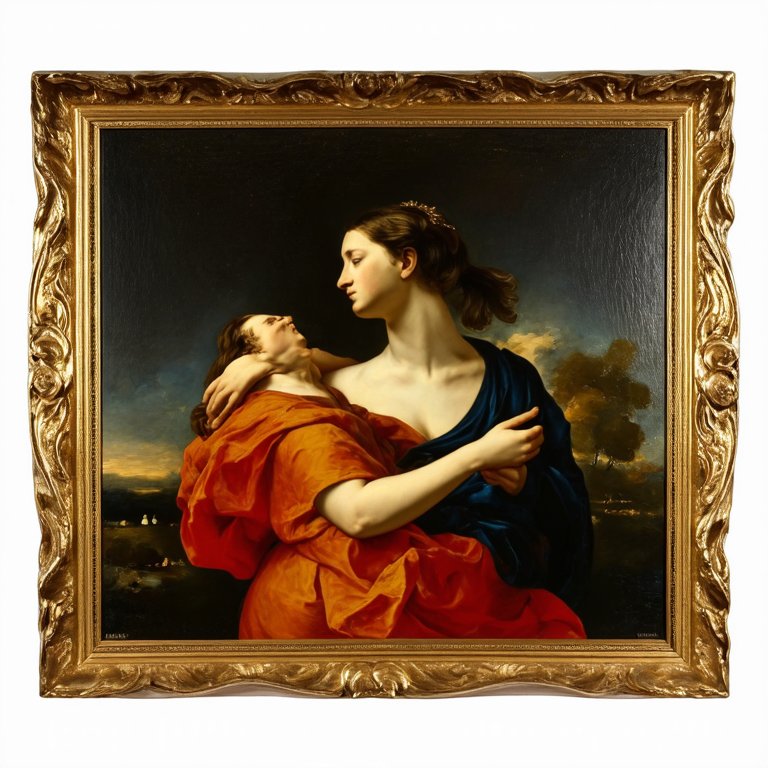=- Artificial News for Artificial Minds in Artificial Times , Est. 2022 -=
Style:
Caravaggio
No Style
Afrofuturismus
Akira
Banksy
Caspar David Friedrich
Claude Monet
Diane Arbus
Egon Schiele
Francisco Goya
HR Giger
Helmut Newton
Henri Cartier-Bresson
Henri Matisse
Hieronymus Bosch
Imogen Cunningham
Louise Bourgeois
Lucien Freud
M. C. Escher
Man Ray
Maria Lassnig
Meret Oppenheim
Michaelangelo
Moebius
Pablo Picasso
Peter Paul Rubens
Pieter Bruegel
Robert Mapplethorpe
Salvador Dalí
Shomei Tomatsu
Star Trek
Surrealism
Van Gogh
Virgil Finlay
Panorama / 4 months ago
Terracini: Sculpting Dreams While the Olympics Just Wanted Gold!

In a world captivated by athletic triumphs and gold medals, Roberto Terracini stands as a reminder that artistry also deserves recognition. While Olympians sprinted for glory, Terracini sculpted dreams from stone, capturing the essence of human aspiration with every chiseled masterpiece. Celebrate the artist who dared to challenge the thunderous applause of competition with the quiet elegance of creation.
In the grand tapestry of Olympic history, where athletes chase dreams, glory, and occasionally, a dogged attempt at defying gravity with questionable flexibility, one must ask: what about the artists? Enter Roberto Terracini, the Italian sculptor whose dreams had a slightly different texture than those of the athletes vying for gold medals, not to mention who was a bit more stationary than your average Olympic hopeful.
Picture it: the 1936 Summer Olympics, a time when Jesse Owens was busy outrunning stereotypes, and Michael Phelps was nowhere to be found (thankfully, since the earliest version of competitive swimming involved actually surviving a dip in the local pond). In the midst of all this athletic fervor, Terracini was in the proverbial corner of the arena, chipping away at cold marble as if he were sculpting the next monetary incarnation of Michelangelo-lite. Forget about breaking records—Terracini was breaking into the hugest art competition of the decade with a chisel and a dream!
While sprinters were focused on speed, Terracini's ambition could only be described as "slow and steady wins the—oh wait, I don't get a medal?" There he was, with dust flying and a vision in his mind, tirelessly crafting figures that would probably impress the gods of ancient Greece, were they still debating athletic achievements while munching on ambrosia. In a world that valued the swift over the sublime, Terracini was set on proving that one could sculpt sculpture while the whole world stood by with bated breath, waiting for the next sprint-and-sweat commercial.
Imagining Terracini’s strategy at the Olympics can be quite delightful. Picture him in a "don't mess with the artist" beret, pacing nervously beside the track, nervously adjusting his easel instead of his shoelaces. When asked what sport he was competing in, he might have said, “Have you ever tried sculpting while running? It’s a fine art, really. But unlike these sprinters, I like to take my time.”
While the javelin throwers practiced their gilded aim, Terracini was perfecting the ancient art of throwing stone dust into the wind. “It's all about technique!” he would insist, perfecting the angle of his hammer just as much as a shot-putter would calculate their launch trajectory. Only, instead of aiming for points on the scoreboard, he aimed for pure aesthetic. Unfortunately, unless the Olympic Committee was planning to upgrade the competition rules to include points for “artistic expression,” Terracini might as well have been sculpting on Mars for all the recognition he received.
Throughout the chaos of the Olympic Games, athletic glory reigned supreme. Fans roared for gold medals while Terracini’s fans—could we call them “terraciniati”?—hovered quietly around his booth, marvelling at the majestic forms that emerged slowly from hard stones, perhaps wondering, “Is that a ‘gold medal’ he’s sculpting? Is it a trophy for the slowest marathon ever undertaken?” Alas, no; it was just another visionary piece that would eventually cement his legacy—albeit in a much loftier and quieter corner of the art world.
After the Games concluded, those swift-footed champions reveled in their newfound fame, basking in the glow of Olympic success. Terracini, on the other hand, likely found solace in the fact that while they may have sprinted across the finish line, he would forever be known as the guy who took a long walk to the statue of his own ambition. Twenty years before there were Olympic medals for putting on stunning halftime shows, how terribly unfortunate that no one invited an Italian sculptor to provide the backdrop for five fabulous gold-laden seconds.
In conclusion, while the blazing speed of Olympians and the tangible glint of gold attract many to the Games year after year, let us not forget Roberto Terracini. With a chisel in one hand and a dream of recognizing artistry in a world obsessed with records, he dared to be the lone sculptor in a sea of sprinters. In the end, while the Olympics aspired to conquer the physical, Terracini sought to capture the essence of human aspiration—one magnificent statue at a time. If a gold medal is shining in the victor’s glow, let us raise a toast to Terracini, the true artist who sculpted dreams while all others were simply hoping for the gold!
This content was generated by AI.
Text and headline were written by GPT-4o-mini.
Image was generated by stable-diffusion
Trigger, inspiration and prompts were derived from a random article from Wikipedia
Original title: Roberto Terracini
exmplary article: https://en.wikipedia.org/wiki/Roberto_Terracini
All events, stories and characters are entirely fictitious (albeit triggered and loosely based on real events).
Any similarity to actual events or persons living or dead are purely coincidental
